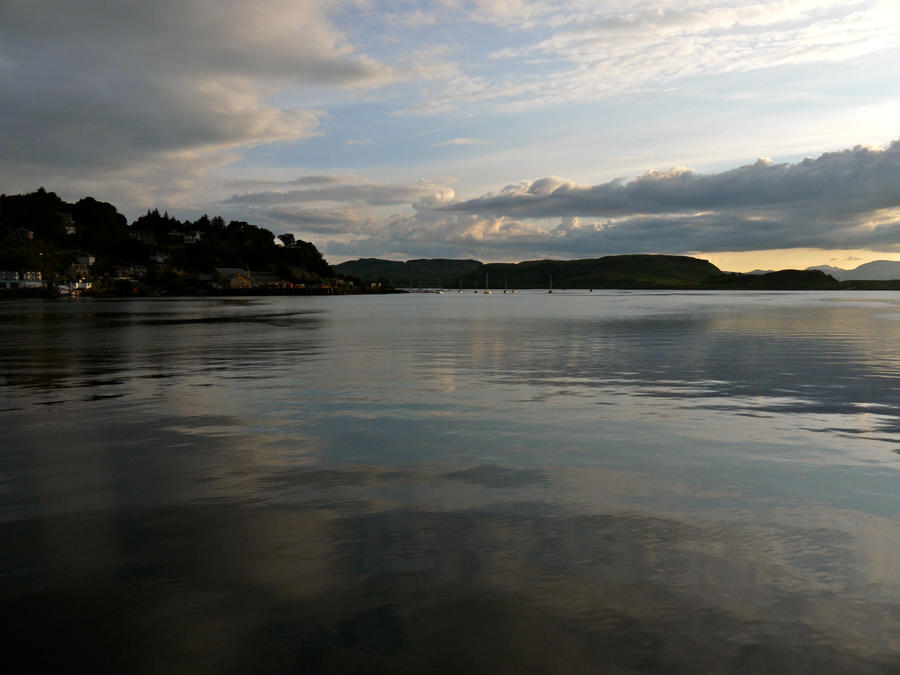ShopDreamUp AI ArtDreamUp
Suggested Deviants
Suggested Collections
You Might Like…
Featured in Groups
Description
Oban (An t-Òban in Scottish Gaelic meaning The Little Bay) is a resort town within the Argyll and Bute council area of Scotland. It has a total resident population of 8,120. Despite its small size, it is the largest town between Helensburgh and Fort William and during the tourist season the town can be crowded by up to 25,000 people. Oban occupies a beautiful setting in the Firth of Lorn. Oban Bay is a near perfect horseshoe bay, protected by the island of Kerrera, and beyond Kerrera is Mull. To the north is the long low island of Lismore, and the mountains of Morvern and Ardgour.
In Oban "The Gateway to the Isles" some 9.4% of the population speak Gaelic.
In the eighteenth century, the land where Oban now stands supported very few households, sustaining only minor shipbuilding and quarrying. The modern town of Oban grew up around the distillery that was founded there in 1794. By the late nineteenth century, Oban was a busy port which shipped wool, whisky, slate and kelp to Liverpool and Glasgow. The arrival of the railways brought new prosperity to Oban, revitalising local industry and giving birth to local tourism. It was at this time that McCaig's Tower, a folly and prominent local landmark, was constructed, as well as the ill-fated Oban Hydro.
During World War II, Oban was a busy port used by merchant and Royal Navy ships. The RN had a signal station near Ganavan which is now a private house. Also near Ganavan was an anti-submarine indicator loop station which detected any surface or submarine vessels between Oban, Mull and Lismore. There was a controlled minefield in the Sound of Kerrera which was controlled from a building near the caravan site at Gallanach. There is one surviving air raid shelter in the centre of Oban.
There was also a Royal Air Force flying boat base at Ganavan and on Kerrera. The airfield at North Connel was originally built by the Royal Air Force during World War II. A Sector Operations Room was built near the airfield and after the war this was extended to become the Royal Observer Corps Group HQ.
Oban was also important during the Cold War because the first Transatlantic Telephone Cable (TAT-1) came ashore at Gallanach Bay and this carried the "Hot Line" between the US and USSR Presidents. There was protected accommodation for the cable equipment at Gallanach Bay.
In Oban "The Gateway to the Isles" some 9.4% of the population speak Gaelic.
In the eighteenth century, the land where Oban now stands supported very few households, sustaining only minor shipbuilding and quarrying. The modern town of Oban grew up around the distillery that was founded there in 1794. By the late nineteenth century, Oban was a busy port which shipped wool, whisky, slate and kelp to Liverpool and Glasgow. The arrival of the railways brought new prosperity to Oban, revitalising local industry and giving birth to local tourism. It was at this time that McCaig's Tower, a folly and prominent local landmark, was constructed, as well as the ill-fated Oban Hydro.
During World War II, Oban was a busy port used by merchant and Royal Navy ships. The RN had a signal station near Ganavan which is now a private house. Also near Ganavan was an anti-submarine indicator loop station which detected any surface or submarine vessels between Oban, Mull and Lismore. There was a controlled minefield in the Sound of Kerrera which was controlled from a building near the caravan site at Gallanach. There is one surviving air raid shelter in the centre of Oban.
There was also a Royal Air Force flying boat base at Ganavan and on Kerrera. The airfield at North Connel was originally built by the Royal Air Force during World War II. A Sector Operations Room was built near the airfield and after the war this was extended to become the Royal Observer Corps Group HQ.
Oban was also important during the Cold War because the first Transatlantic Telephone Cable (TAT-1) came ashore at Gallanach Bay and this carried the "Hot Line" between the US and USSR Presidents. There was protected accommodation for the cable equipment at Gallanach Bay.
Image size
4000x3000px 3.15 MB
Make
Panasonic
Model
DMC-G1
Shutter Speed
10/6400 second
Aperture
F/9.0
Focal Length
14 mm
ISO Speed
100
Date Taken
Jun 7, 2010, 8:44:58 PM
© 2010 - 2024 celtes
Comments1
Join the community to add your comment. Already a deviant? Log In
Nice view ^^






























